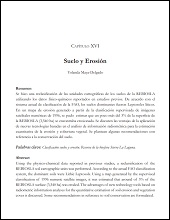Biochemical composition and fatty acid profile of gonads from wild and cultured shortfin corvina (Cynoscion parvipinnis) during the early maturation stage
Autor
MAYRA LIZETT GONZALEZ FELIX
PERLA URQUIDEZ BEJARANO
MARTIN PEREZ VELAZQUEZ
REINA CASTRO LONGORIA
CELIA GLORIA VAZQUEZ OVANDO
Metadatos
Mostrar el registro completo del ítemResumen
"Cynoscion parvipinnis is an important fisheries resource of the Gulf of California used locally for human consumption. Its aquaculture potential as recently been demonstrated, and cultured organisms are already available. In this study, the gonadal developmental stage, proximate composition, fatty acid profile and other biochemical and biological indices of wild and cultured fish were characterized. A total of 80 fish, 30 cultured (15 female and 15 male) and 50 wild (31 female and 19 male), captured in November at Santa Rosa, Sonora, Mexico, were analyzed. Histological analyses of the gonads showed that 100% of the wild and cultured fish were at an early maturation stage. Wild fish had greater body eight, total length and gonadosomatic index. Cultured female fish (19.64%) possessed a slightly higher protein content in their gonads than wild females (17.11%), whereas males had similar values (14.00 and 14.83%). Cultured females (10.85%) and males (20.48%) had a significantly greater crude fat content than wild fish (female: 2.05%, male: 11.05%). Palmitic acid was the most abundant fatty acid (FA), ranging from 128.58-164.84 mg of 16:0 g-1 of gonad wet weight. After 16:0, highly unsaturated FAs like DHA, ARA and EPA were the major FA in gonadal tissue; n-3 FAs were quantitatively higher than n-6 FAs, while the n-3/n-6 ratios ranged from 2.08-2.81. In general, the biochemical composition of the gonad of wild and cultured organisms at an early maturation stage was quite similar. These data may serve as indicators of dietary requirements for a maturation diet for broodstock culture."
Colecciones
Ítems relacionados
Mostrando ítems relacionados por Título, autor o materia.
-
PROMOCIÓN DEL PERIFITON PARA EL CULTIVO DE CAMARÓN BLANCO: HACIA UNA ACUICULTURA ECOLÓGICA
DOMENICO VOLTOLINA LOBINA; JUAN MANUEL AUDELO NARANJO; MARIA DEL ROSARIO PACHECO MARGES -
Suelo y Erosión
YOLANDA LOURDES MAYA DELGADO


